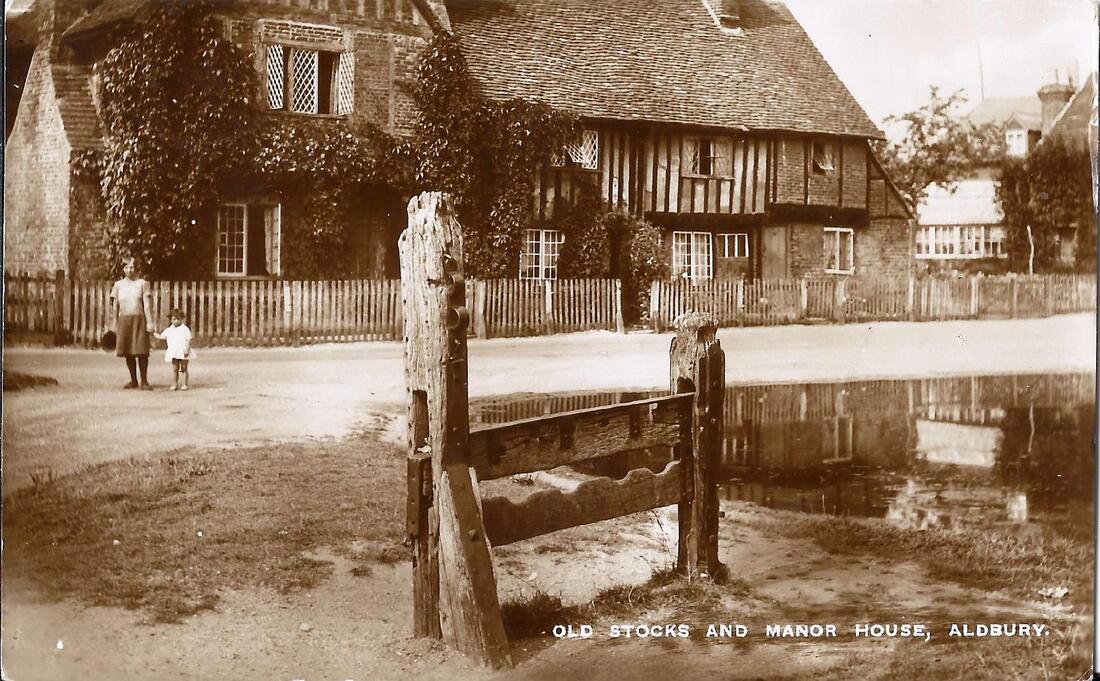Hertfordshire
ALDBURY SP 970 131
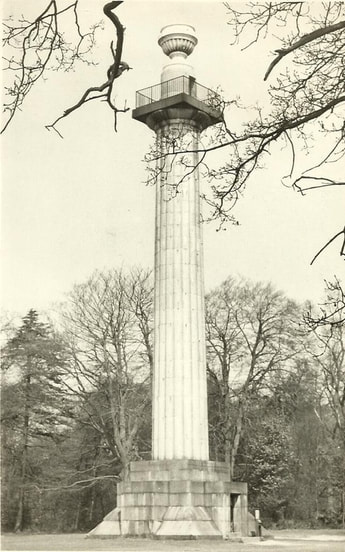
Bridgewater Monument
The Bridgewater Monument is a Neoclassical Doric column designed by Sir Jeffry Wyatville and built by Philip Nowell of Pimlico. An inscription reads:
IN HONOUR OF
FRANCIS THIRD DUKE OF BRIDGEWATER
FATHER OF INLAND NAVIGATION. 1832
The 172 internal steps lead to a viewing platform surmounted by a copper urn. It is on the National Trust's Ashridge Estate.
The Bridgewater Monument is a Neoclassical Doric column designed by Sir Jeffry Wyatville and built by Philip Nowell of Pimlico. An inscription reads:
IN HONOUR OF
FRANCIS THIRD DUKE OF BRIDGEWATER
FATHER OF INLAND NAVIGATION. 1832
The 172 internal steps lead to a viewing platform surmounted by a copper urn. It is on the National Trust's Ashridge Estate.
ALDBURY SP 964 124
NORTH MYMMS TL 254 030
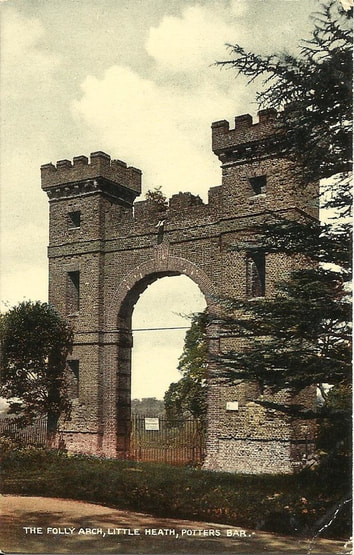
Folly Arch
In about 1740, James Gibbs designed the south entrance to the Gabions estate for Sir Jeremy Sambrooke. The castellated arch is an early example of the Gothick style.
In about 1740, James Gibbs designed the south entrance to the Gabions estate for Sir Jeremy Sambrooke. The castellated arch is an early example of the Gothick style.
WATFORD SO 511 404
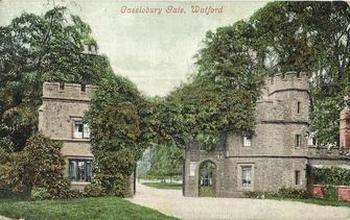
Cassiobury Gate
Cassiobury Park is a public park formed out of the grounds of Cassiobury House in 1909.
The house was demolished in 1927 and the entrance gates were demolished in the 1970s for road widening.
Postcard posted: 1906
Cassiobury Park is a public park formed out of the grounds of Cassiobury House in 1909.
The house was demolished in 1927 and the entrance gates were demolished in the 1970s for road widening.
Postcard posted: 1906
WALTHAM CROSS
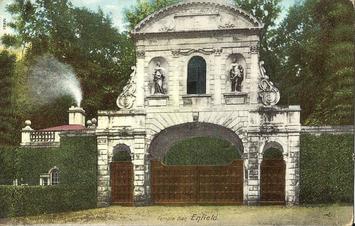
Old Temple Bar
Temple Bar was the main entrance to the city of London from the City of Westminster. Although it escaped the Great Fire of London in 1666, it was rebuilt in a Baroque style and attributed to Christopher Wren.
It was dismantled in 1878, because of road widening and in 1880 Henry Meux bought the 2,700 stones and had it re-erected at Theobalds Park.
Temple Bar was the main entrance to the city of London from the City of Westminster. Although it escaped the Great Fire of London in 1666, it was rebuilt in a Baroque style and attributed to Christopher Wren.
It was dismantled in 1878, because of road widening and in 1880 Henry Meux bought the 2,700 stones and had it re-erected at Theobalds Park.
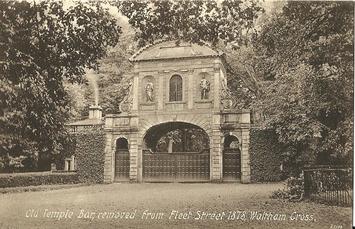
In 1984 it was purchased by the Temple Bar Trust for the sum of £1 and re-erected in Paternoster Square near to St Paul's Cathedral.
WALTHAM CROSS TL 360 003
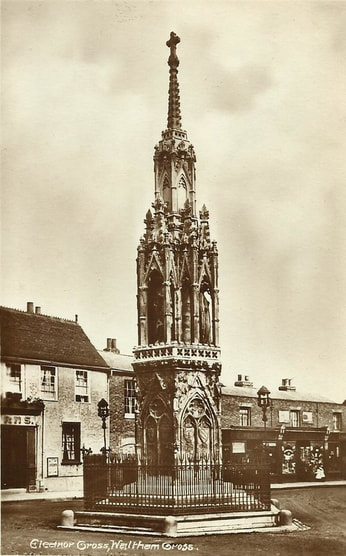
Eleanor Cross
The Eleanor Cross at Waltham Cross is one of three remaining of the twelve that King Edward I had erected, where the funeral cortege of his wife, Eleanor of Castile, rested on its way from Lincoln to London after her death in 1290.
The sculptor was Alexander of Abingdon and the masons were Nicholas Dyminge de Reyne and Roger Crundale.
It was partly rebuilt in 1832-3 by W B Clarke. Work was done in 1885-92 by C E Ponting and it was restored in 1950-3.
The present statues are replicas.
The other remaining Eleanor Crosses are at:
GEDDINGTON, Northamptonshire.
HARDINGSTONE, Northamptonshire.
The Eleanor Cross at Waltham Cross is one of three remaining of the twelve that King Edward I had erected, where the funeral cortege of his wife, Eleanor of Castile, rested on its way from Lincoln to London after her death in 1290.
The sculptor was Alexander of Abingdon and the masons were Nicholas Dyminge de Reyne and Roger Crundale.
It was partly rebuilt in 1832-3 by W B Clarke. Work was done in 1885-92 by C E Ponting and it was restored in 1950-3.
The present statues are replicas.
The other remaining Eleanor Crosses are at:
GEDDINGTON, Northamptonshire.
HARDINGSTONE, Northamptonshire.
